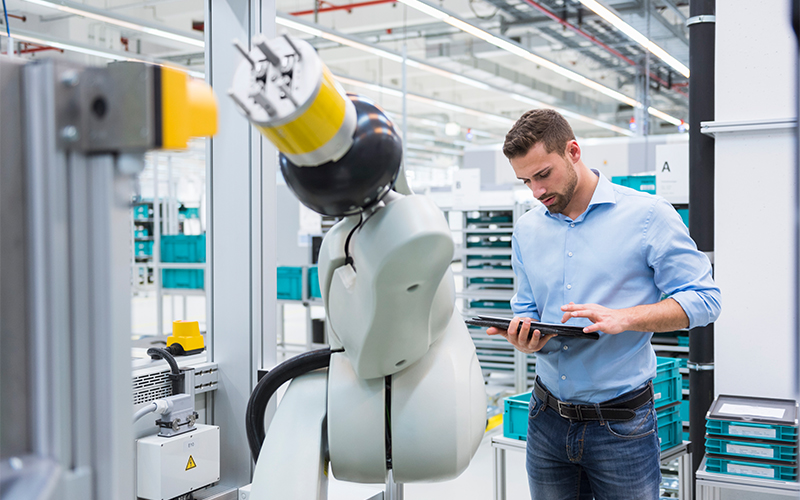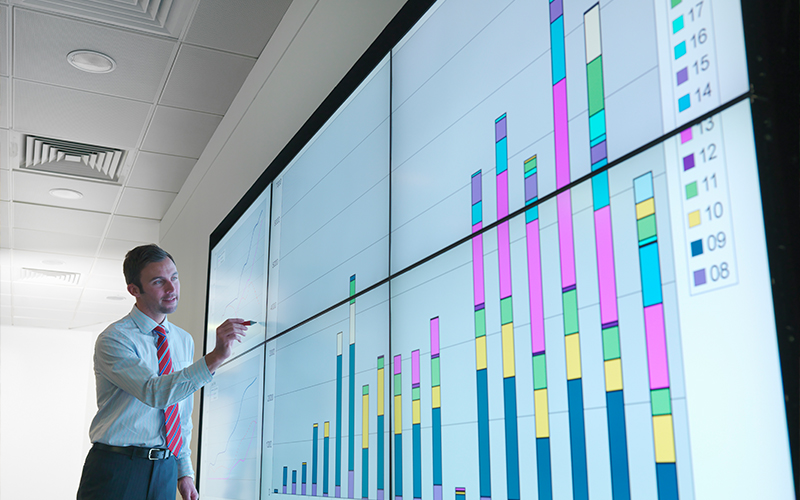Sourcing and Procurement
How Automation is Redefining the Procurement Landscape
Automation has transformed the way businesses function the world over. The word automation makes people conjure a world full of robots that are replacing humans. Hence, some are still sceptical about adopting it. However, the way ahead for businesses is establishing a system of man-machine collaboration where technology assists humans in various tasks and enhances overall outcomes.
The COVID-19 pandemic has caused major disruption across sectors globally. This has left businesses with no option but to adopt digital transformation. Leveraging innovative technologies has not only reduced costs but also increased productivity.
For the complete digitalisation of an organisation, there needs to be agility* and transformation in the way people and processes function. Emerging technologies such as cloud computing, Robotic Process Automation (RPA), Artificial Intelligence (AI), etc., are no longer a choice but a must for businesses to thrive in a dynamic marketplace.
Automation, which is essentially automating repetitive, labour-intensive, manual tasks, is a vital part of digital transformation. Automation can be used with Artificial Intelligence for intelligent automation where the software is capable of predictive analysis, pattern recognition, decision-making, and much more.
Not all processes can be automated. Only rule-based processes that follow a logical sequence can be automated. Therefore, if an organisation is considering automating the procurement process, it needs to identify the rule-based processes.
What are different procurement processes?
The procurement function is an integral part of all businesses. It has different steps for sourcing goods/services for an organisation to achieve its goals.
A typical procurement cycle goes through the following steps:
Step 1: Sourcing
This is the first step that starts with identifying the goods and services required. Based on these needs, a purchase request is generated. Vendors are vetted and the best one is selected.
Step 2: Purchasing
This step entails aspects such as negotiating the terms with vendors, preparing purchase orders, receipt of goods, and their inspection.
Step 3: Payment
Orders are matched with invoices for accuracy. Payment is processed after approval of the invoice. Records of the invoice, PO, and payments are maintained.
Which of these Processes can be Automated?
- Vendor Management
- Purchase Requisition
- Purchase Order
- Contract Administration
- Invoice Processing
- Data Management
As a part of the sourcing, vendors are selected. Vendor management entails establishing long-term relationships with vendors in addition to their selection. Automation software can compare different vendors based on the required criteria and select the best one. It also helps establish long-term relationships by identifying and resolving grievances,
A purchase requisition is a complex process that goes through several steps. The automation software streamlines the process and removes redundant steps. Automation minimises the time required for the approval cycle and speeds up the purchase process.
Manual PO practices have inadequacies that make the process slow and tedious. The complete purchase order cycle can be automated to enhance efficiency and productivity.
An organisation has several contracts from different vendors to be actioned and maintained. In legacy systems, this requires checking, filing, and updating these records manually. Automation bots organise all contracts in a central repository that can be accessed easily by all stakeholders. Automation also maintains the consistency and accuracy of contracts.
Manual invoice processing has several shortcomings. Some of them are misplaced POs, missing goods receipts, submission delays, complex spreadsheets, limited collaboration, insufficient transparency, and more. Automation software can be integrated for the entire invoice processing cycle and eliminate the limitations of the manual process.
The invoice processing system requires large volumes of data to be gathered, analysed, and used. Automation streamlines data management. Data can be organised and leveraged using technologies like cloud computing.
Emerging technologies such as cloud computing, SaaS, IoT, RPA, AI, etc., are transforming the procurement landscape. Technology has streamlined sourcing, spend analytics, procurement, contract management, and more. Automation of the procurement process makes it efficient, reduces errors, and speeds up the process thereby enhancing productivity.
In conclusion
Businesses that are progressing on their digital transformation journey need to embrace automation to enhance efficacy. Automation of procurement processes accelerates the procure-to-pay cycle, minimises labour costs, and enhances accuracy. Digitisation of procurement functions facilitates predictive strategic sourcing, proactive vendor management, and optimised procurement transactions. These factors have accelerated the adoption of automated procurement systems by businesses across the globe. The latest market report reveals that the Global Software Market which was valued at 4.7 billion USD in 2021 is expected to reach 10.2 billion USD by 2027.
*For organizations on the digital transformation journey, agility is key in responding to a rapidly changing technology and business landscape. Now more than ever, it is crucial to deliver and exceed on organizational expectations with a robust digital mindset backed by innovation. Enabling businesses to sense, learn, respond, and evolve like a living organism, will be imperative for business excellence going forward. A comprehensive, yet modular suite of services is doing exactly that. Equipping organizations with intuitive decision-making automatically at scale, actionable insights based on real-time solutions, anytime/anywhere experience, and in-depth data visibility across functions leading to hyper-productivity, Live Enterprise is building connected organizations that are innovating collaboratively for the future.






